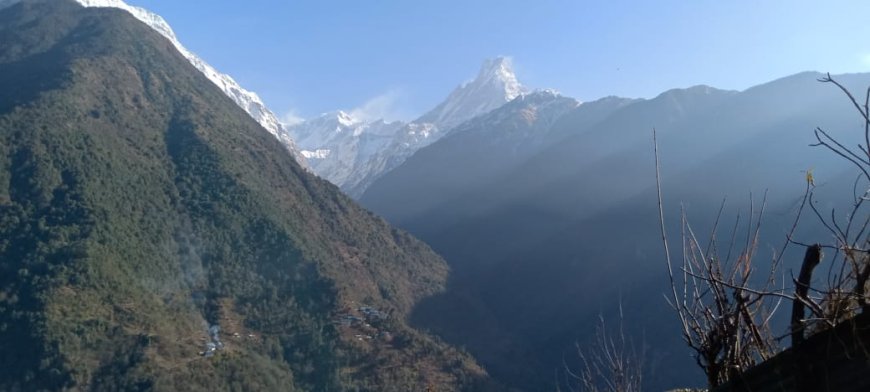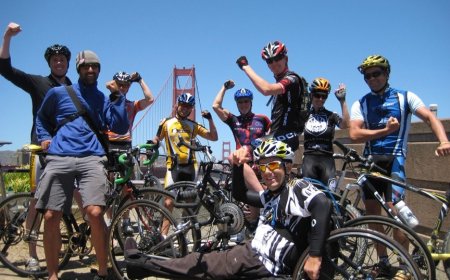How to Avoid Painful Mistakes on This Nepalese Trail
From Besisahar to Jomsom, explore a trail of beauty, endurance, and culture on the legendary Annapurna Circuit Trek.

Nepal trekking up toAnnapurna Base Camp (ABC) is touted as a dream-come-true adventure a magical confluence of Natures bounty with striking Himalayan summits along with a rich cultural tapestry and tranquility for the soul. However, what many first-time trekkers dont realize is that taking part in all that splendor calls for navigating through something of a minefield of a trail. From underestimating altitude and overpacking to ignoring climate dangers and misjudging bodily limits, they could quickly rework a once-in-a-lifetime adventure into a frustrating and even risky epic fail.
The Annapurna Base Camp trek passes through a multitude of various landscapes like rice terraces, mountain flats, and thick rhododendron forests, as well as various cultures of Gurungs, Magars, and Thakalis. It is probably a less faraway version of the total Annapurna Circuit, but that doesnt make it clean. Elevations over 4,000 meters, lengthy day by day treks, and finicky mountain climate require greater ardour than that. Too many hikers underestimate the planning required and wind up paying for it with fatigue, infection, or damage.
Then how do you ensure your ABC trek is a happy, life-changing one and not an agonising mistake?
Heres your complete blog on not making the most common (and expensive!) mistakes on the trail to Annapurna Base Camp. Well guide you through it all: what to pack, how to train, why altitude is no joke, and how to mentally gear up for success. Whether youre an experienced hiker or a noob to the mountains, the tips below will help you avoid the pitfalls and relish that incredible Annapurna trail ready, prepared and pain-free.
Neglecting Physical Preparation: The Trek is Not a Hike through the Park!
A lot of trekkers tend to underestimate how taxing the ABC trek is. Its not climbing at altitude, like Everest, but long uphill hikes, steep descents, and continuous forward progress over days require endurance. It's a mistake that your body would hate you for making. Start training at least 6-8 weeks before you go up for your trek. This should also have cardio, strength training, and practice hiking with a weighted backpack. A strong body lowers the risk of injury, altitude sickness, and physical exhaustion. Train smart, and the trail will reward you.
Too Much or Too Little Weight: Gear Mistakes Are Common
Packing for ABC is a delicate game too much gear is a burden, too little can leave you exposed. Bypass the heavy devices, useless clothes, and bulky extras. Deal with the essentials accurate hiking boots, artificial thermal layers, a rain-layer shell, reusable water bottles, and a headlamp. And by no means forget about a fundamental first-useful resource kit and water purification pills. The weather can change quickly on the path, so its key to layer. Pack as little as you can, as intelligently as you can, and do a full test pack before you leave. It might spare your back and your adventure.
Ignoring Acclimatization and Altitude Awareness
While the highest point of the ABC trek is approximately 4,130 meters, there is still a risk of altitude sickness. One painful mistake to keep away from i mountaineering high when your body has no longer had a threat to adapt to the altitude. You should walk slowly, drink frequently, and take note of how your frame is reacting. Take them if you need them (such as at Chhomrong or Deurali). Read up on the symptoms of A.M.S. (headache, nausea, fatigue) and dont dismiss them. Going slow and respecting altitude, in other words, isnt weakness its savvy that will allow you to keep right on trekking.
Misjudging the weather and the Seasons
The climate in the Annapurna area can change in minutes: sunshine one minute, sleet or a typhoon the next. Trekkers, mainly, are lured with the aid of the fun of the unknown, however regularly underestimate the problem, select the incorrect season, or fail to percent the right gear.
Leeches can be a nuisance in the monsoon months (June to August), as can muddy paths. Periods of heavy snowfall can cover trails in winter (December to February). The proper trekking seasons are spring (MarchMay additionally) and autumn (late SepNov). Test forecasts, layer up, and be organized for speedy adjustments at all times. Its no longer only a mistake to disregard mountain climate; it may be a risk.
Overconfidence and Rushing the Journey
Theres a popular mistake in feeling the need to get it all done too quickly. We get hurt or exhausted or altitude-sick by that kind of overconfidence. For some, that means skipping rest days or ignoring fatigue or even taking long routes in bad weather all for the sake of getting there faster.Annapurna Base Camp isn't a race. Even if you recollect yourself as a hiking machine, take it slow, revel in the view, speak to locals, and let your body acclimatize. Dashing over this magical isle is most effective in robbing you of the magic you came for. Travel slowly, and the Himalayas will give you more than distance.
No Permits, Maps, Or Local Beta
The ABC trek is in a conservation area and actually took two permits: a TIMS card and an ACAP. Failing to obtain them can lead to fines or rejection. Also, a lot of trekkers do without maps or guides, believing that GPS suffices. Signal can be lost, and the pathscan can close off. It adds another level of safety and can offer cultural insights and community support by hiring a local guide or porter. Whats more, securing your teahouses in advance during the busy season avoids long days with nowhere to lay your head. Prepare, prepare, prepare knowledge and paperwork count.
How to be organized for hiking in Nepal?
To trek in Nepal, boost your stamina with regular aerobic inclusive of hiking, running, or bikingStrollll with a backpack on lengthy walks and give a boost to your legs and middle. Read approximately altitude sickness, p.c. nicely with layers for distinct weather, and put on broken-in boots. Get required licences and insurance, and take a basic first aid course. Get ready, mentally, for remote trails, basic teahouse stays, and unpredictable mountain weather. Discipline yourself to respect local life and wildlife during your travels.
What is the hardest trek in Nepal?
Great hardest trekking trail in Nepal is Great Himalayan Trail or Dhaulagiri Circuit. These are long, remote, strenuous routes over several high-altitude passes above 5000m. Trails are rough, the weather can be unpredictable, and the centers are sparse. Trekkers require peak health and superb coaching, as well as previous high-altitude enjoy. These tracks undertake bodily health and mental sturdiness and aren't for the faint-hearted, only for experienced and well-prepared adventurers.
Is it safe to trek in Nepal?
Nepal is a Trekkers Paradise, but a Safety-Net Crisis LoomsTrekking in Nepal can generally be done safely, particularly on crowded tourist routes including the Annapurna Circuit and Everest Base Camp. The paths are fairly well-travelled and teahouses, and local help can be found. However, there are altitude-related health issues to deal with in addition to abrupt weather adjustments and periodic landslides. Taking precautions, hiking slowly, staying nicely hydrated, and following protection recommendations can minimise risks. You're strongly cautioned to take a manual or porter, especially in case you are a solo traveler or are doing the less commercially traveled routes.
How much ought you to trek in Nepal?
Trek to Annapurna Base Camp. You ought to be fairly to pretty in shape to go trekking in Nepal. Average day hikes can be upwards of five hours of hiking through steep and rocky mountainous terrain, usually at excessive altitude. Normal aerobic, leg strengthening, and balance physical games are very critical. You certainly dont need to be a pro athlete, but the better your endurance, the healthier your body, and with a stronger willpower,e r the more you can enjoy the experiences safely. Some pre-trek training is strongly recommended.





































